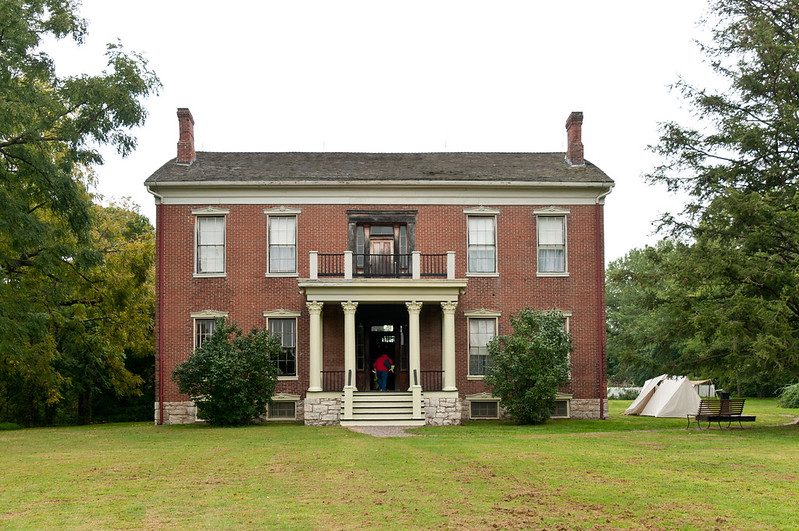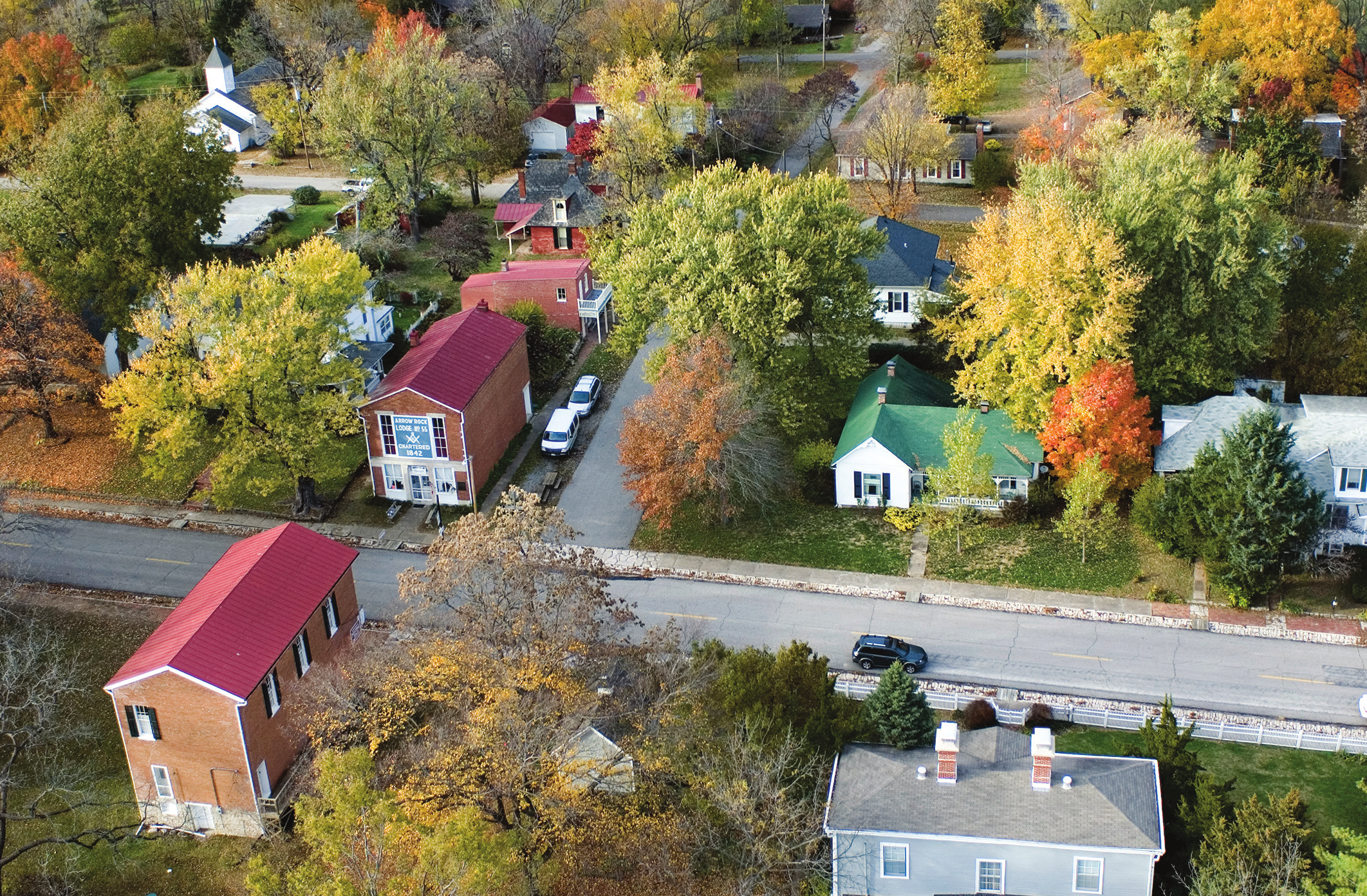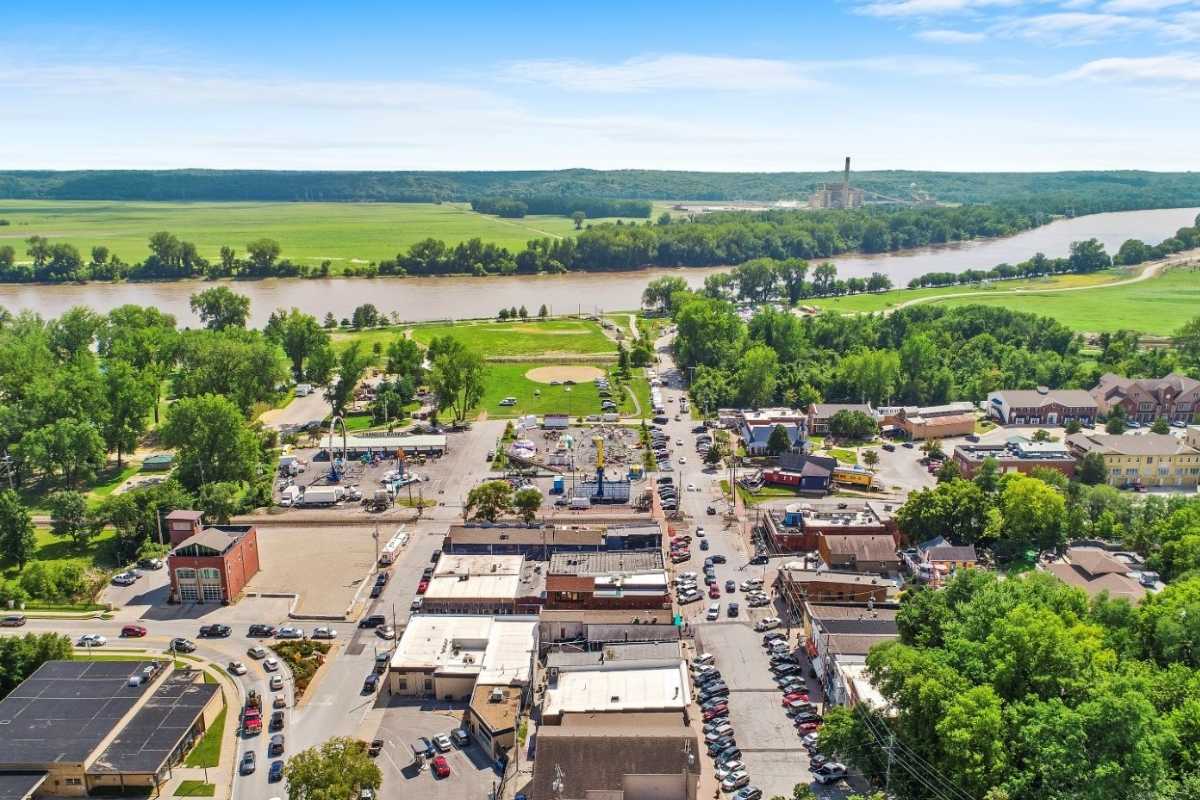The 132-acre Dillard Mill State Historic Site offers a fully operational turbine-powered roller mill which can be toured and a mill store built around 1899. There is also a day-use picnic area with a shelter and a mile-and-a-half hiking trail through a glade and wooded uplands east of the mill.
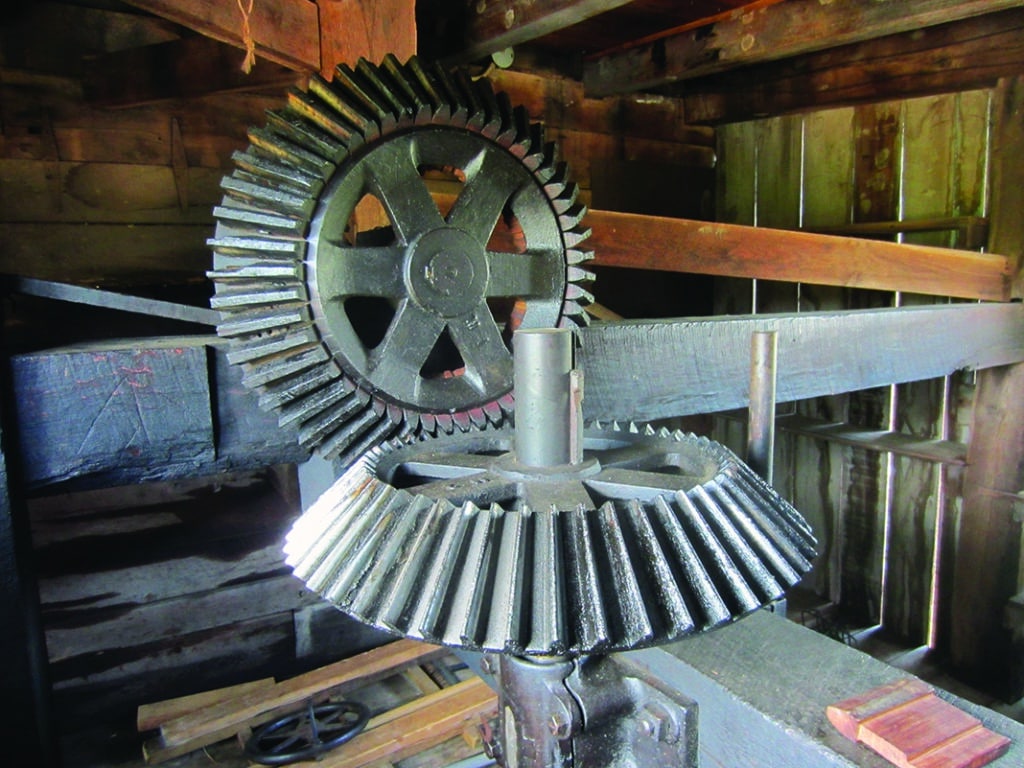
Photo Courtesy of Susan Flader
Dillard Mill State Historic Site
NESTLED AMONG THE OZARK HILLS along a rocky stretch of Huzzah Creek is one of the state’s most picturesque gristmills. Dillard Mill was added to the state park system through a donated lease from the L-A-D Foundation, a private land preservation organization, in 1975. State park officials undertook a massive overhaul of the mill’s mechanical systems, and today the machinery—almost all of which is original to the mill—is in good working order. Visitors delight in the creaks and moans as the turbine begins to spin, belts move, and the mill inches its way slowly back to life.
Reflections of the mill’s barn-red metal siding shimmer in the clear waters of the ponded Huzzah Creek and are a muse to photographers and artists alike. The setting of this Crawford County mill is extraordinary. There are two ponds, one upstream and one downstream of the mill, separated by a narrow outcrop of rugged dolomite that continues to the east and south as a pine-covered bluff. As the bluff peters out, the small tributary Crooked Creek enters Huzzah Creek. At one time, the Huzzah wound past the miller’s house and formed a large gooseneck. Eventually, the erosive work of the water breached the rocky ledge, and the Huzzah took a shortcut down a beautiful waterfall, the same route it used during many flash floods. Some attribute the cleft in the dolomite to a lightning bolt, but it is a classic case of a cutoff of an entrenched meander, leaving an isolated “lost hill” where the mill now stands.
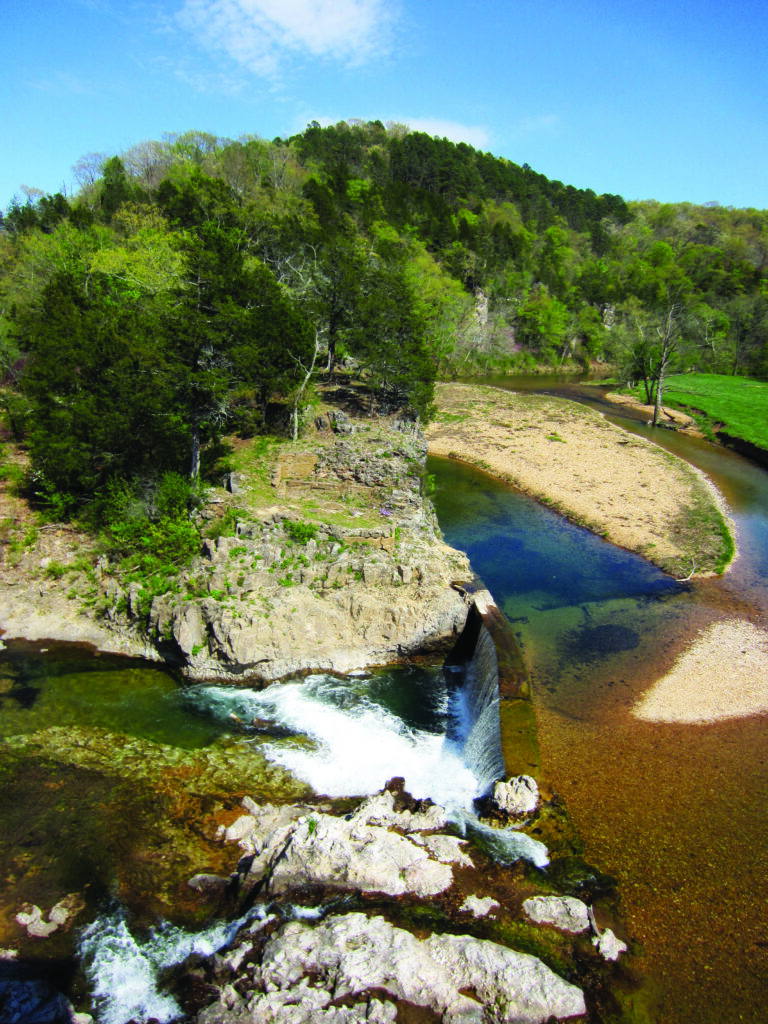
Photo Courtesy of Susan Flader
Regardless of the rock gap’s origin, it presented an obvious site for a small dam and water-powered mill. The millrace, where the sluice gate is located, was cut into the bedrock. The present-day mill was preceded by another mill built just north and below today’s location. The first mill is credited as having been built by Francis Wisdom, who owned the property from 1853 to 1869. Joseph Dillard Cottrell and James Cottrell purchased it in 1881. Joseph ran the mill, while James opened a store just to the north. The local economy took an upswing with the 1880 opening of the Sligo iron furnace ten miles west in Dent County. In 1887 the first post office was established near the mill, and the small town of Dillard was born, named for the mill’s operator, Joseph Dillard Cottrell. In 1890 the Cottrells sold the mill to Andrew
Jackson Mincher and his son Jesse, but in 1895, the old mill burned. Around this time, the Sligo Furnace Company built a spur line connecting Sligo and Dillard to the St. Louis, Salem, and Little Rock Railway, thereby providing access to more distant markets and increasing migration into the area—until the Sligo Furnace, the last surviving iron furnace in Missouri, closed in 1923. The railroad spur ceased operating around 1930.
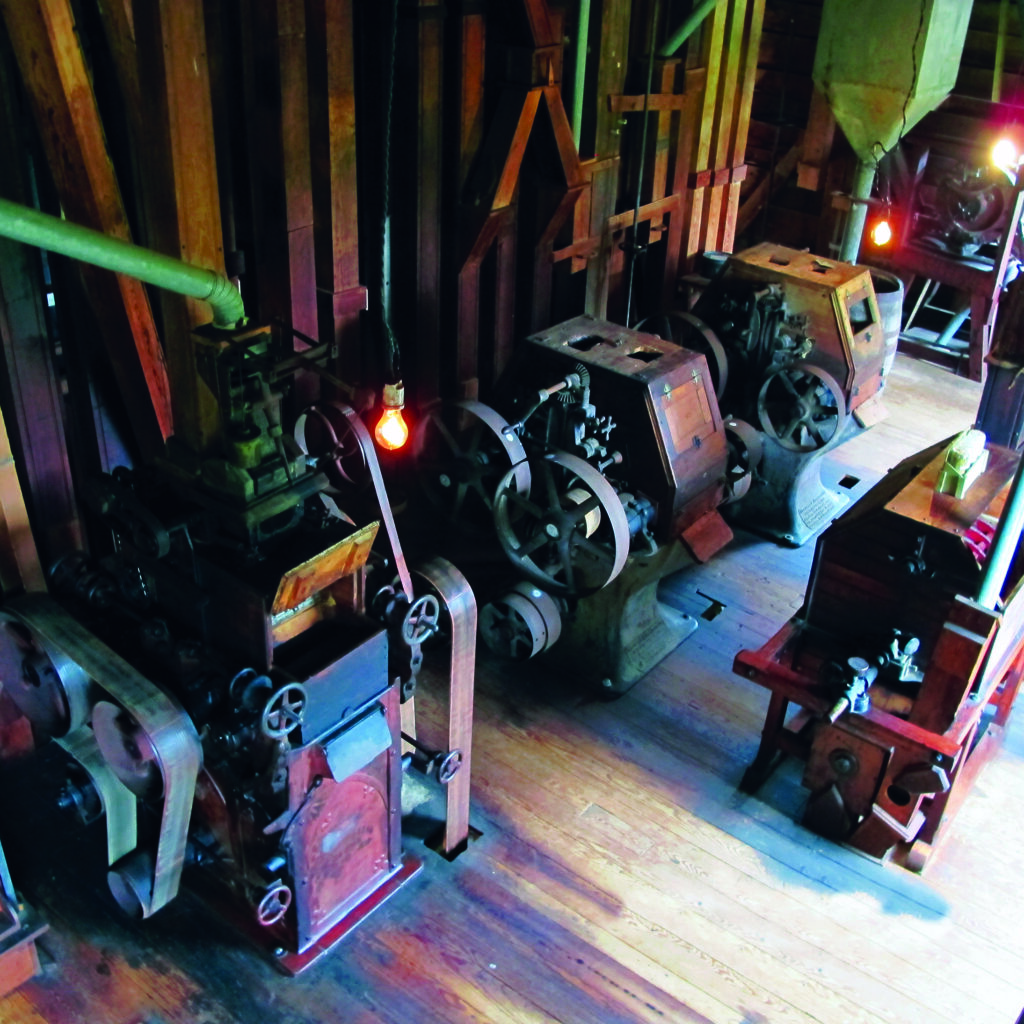
Photo Courtesy of Missouri State Parks
The present mill was completed in 1908 by Emil Mischke, a German-Polish immigrant. He took a job at Sligo in 1899, bought the mill property, moved there in 1901 to operate a sawmill, and then built the new gristmill. Dillard Mill State Historic Stie. It was state-of-the-art, powered by a turbine instead of a waterwheel and crushing grain between a series of steel rollers instead of buhrstones. Mischke and his sister and partner Marie operated the mill together, though lore tells that Marie was the miller. She was a full partner in the enterprise from 1908 until its sale, weighing the customer’s grain, collecting the miller’s share of the final product, and operating the machinery. In 1927, Emil at age sixty-seven sent for a mail-order bride. Anna Pressler from Los Angeles never became accustomed to the rugged Ozarks, and in 1930, she persuaded Emil to sell the mill and move to California. Marie continued to live in Dillard until her death in 1944 and is buried in the old Dillard cemetery, which is surrounded by the historic site but privately maintained.
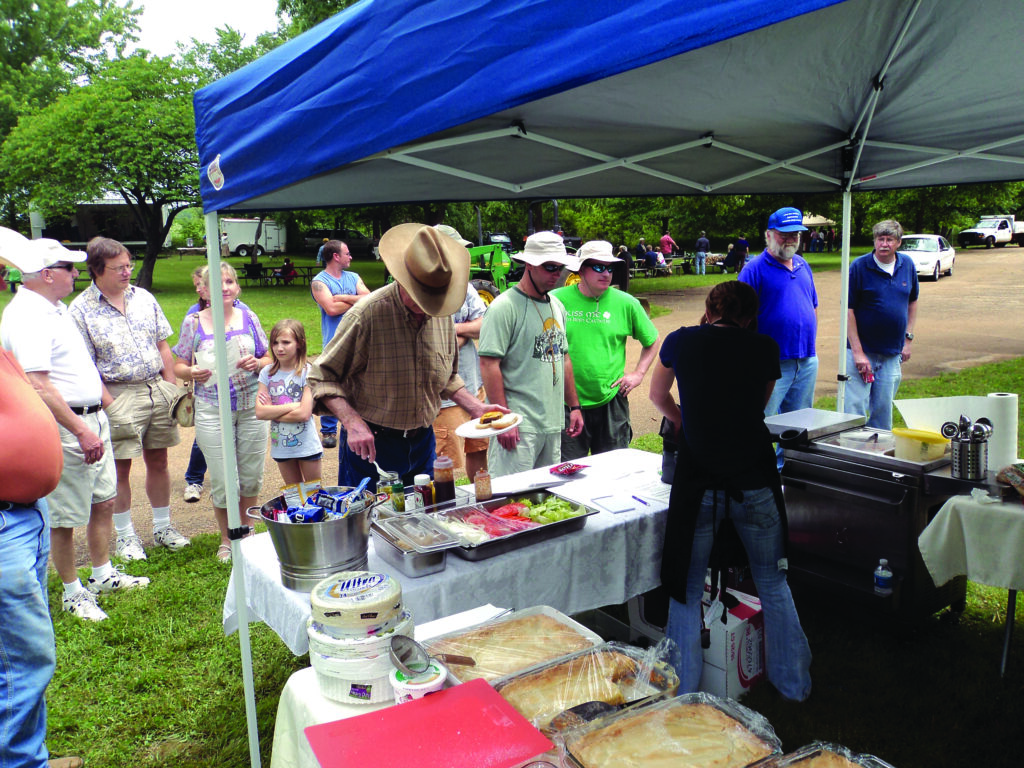
Photo Courtesy of Yvonne Bobbitt
Today, the 132-acre Dillard Mill State Historic Site offers a fully operational turbine-powered roller mill, which visitors can tour for a nominal fee, and a mill store built around 1899 by Jacob Adams. Klemme’s Old Mill Lodge and several other historic buildings are used as staff residences and offices. The site also has a day-use picnic area with a shelter and a mile-and-a-half hiking trail through a glade and wooded uplands east of the mill. The trail affords a scenic overview of the mill and its ponds. The park is bordered on the east and north by Mark Twain National Forest, and there have been discussions about leasing or buying more land for hiking trails and special events. To a greater extent than perhaps any other mill in the state, Dillard Mill still functions as a community center.
Dillard Mill stands as a reminder of a not-so-long-ago era, when man and nature cooperated to produce one of society’s needs. Of the more than 900 mills that dotted Missouri’s landscape at the turn of the century, the sites of only about 150 are known today. Many of the mill buildings are but skeletal remains. Some are used as houses or other businesses, but all hark back to a simpler time. Along with the other mills preserved in the state park system, Dillard Mill is a treasure.
In 1980, a millwright came to inspect and repair the machinery. He was amazed to find the mill exactly as the previous owners had left it, with all of the machinery still in place.

DILLARD MILL STATE HISTORIC SITE • 142 DILLARD MILL ROAD, VIBURNUM
Order Missouri State Parks and Historic Site here.
Related Posts
Visit the Battle of Lexington State Historic Site
Lexington, Mo is brimming with annetebellum homes and amazing architecture, and is surrounded by beautiful landscapes. The Anderson House was used as a hospital during the Civil War. The site is most notable for the Battle of the Hemp Bales. Come find out why.
Discover The State’s First Historic Site
Find out why the state’s first historic site is worth the trip. In our series on state parks, we will take you all around the state. Each park has unique features and many amenities. Grab your family, friends, and loved ones, and get out and explore.

